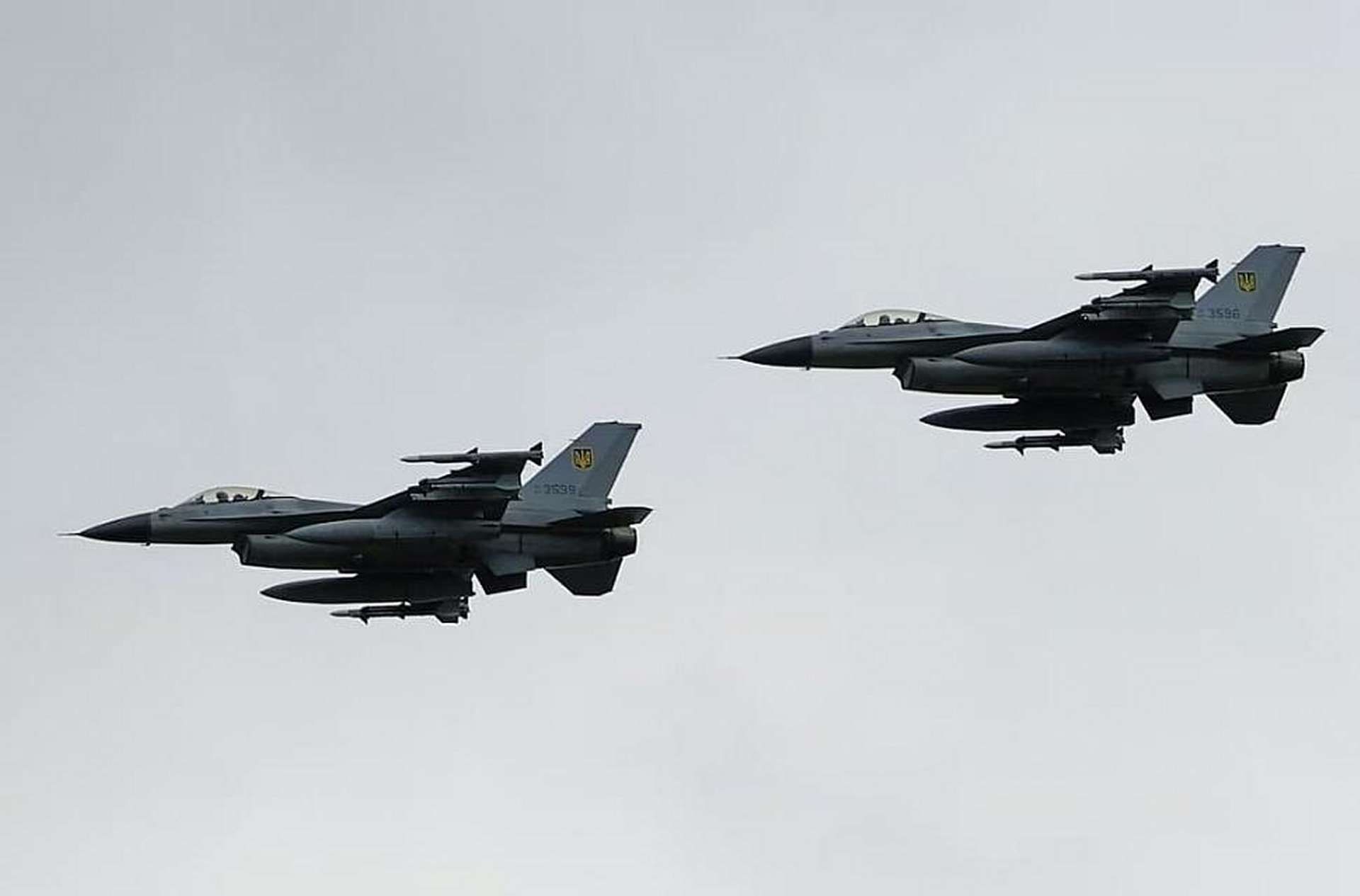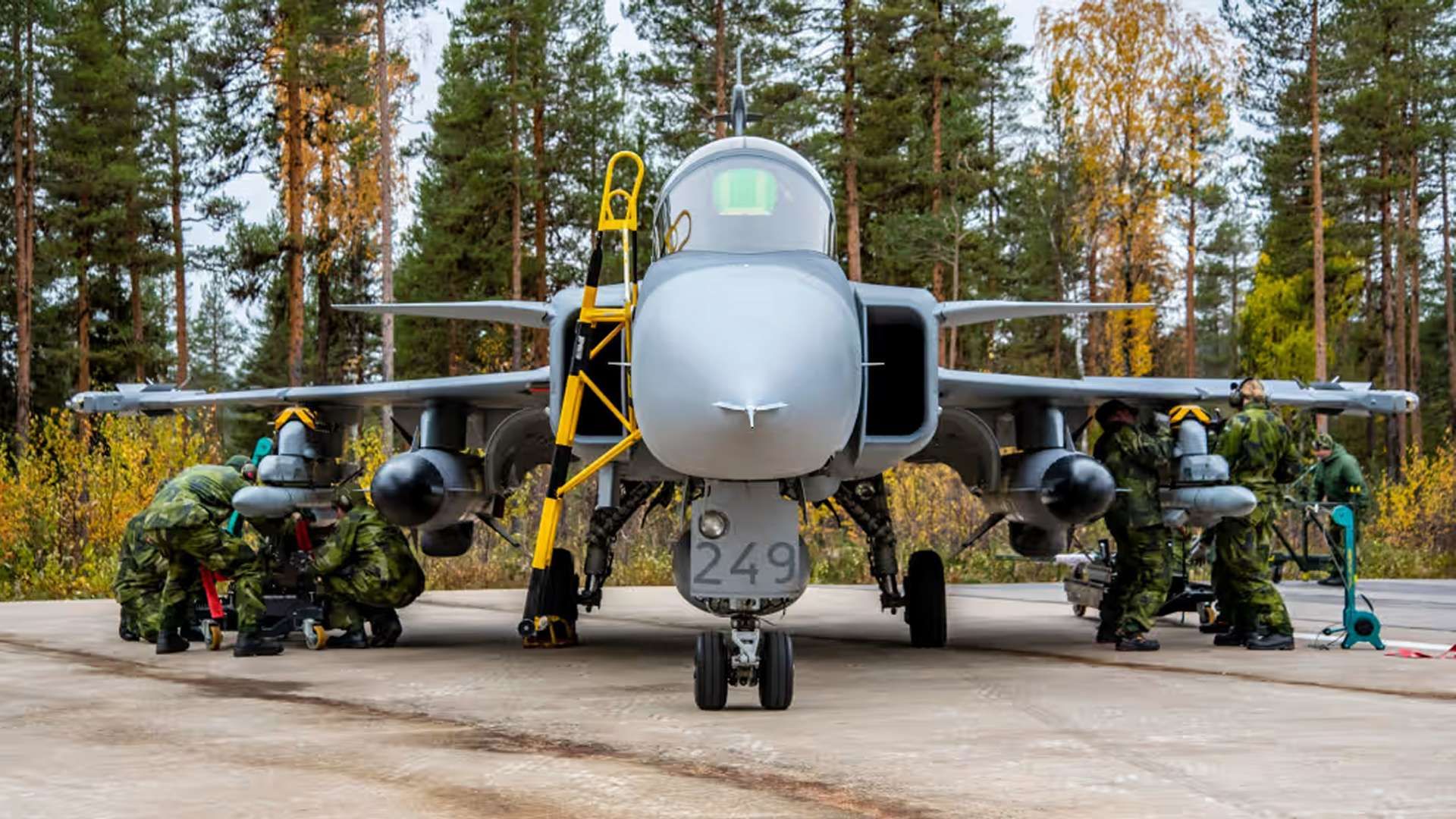Breaking News
Gripen C/D fighter jets transfer to Ukraine hinted as Sweden increases military support.
On September 9, 2024, the Swedish government announced its 17th military support package for Ukraine, valued at SEK 4.6 billion (€400.2 million). This package raises the total military aid provided since the start of the conflict to SEK 48.1 billion (€4.18 billion). It includes donations of equipment, direct procurement, material units, and financial contributions, as well as spare parts for the JAS 39 Gripen C/D fighter jets, which could indicate preparation for a potential future transfer of these aircraft to Ukraine.
Follow Army Recognition on Google News at this link

The JAS 39C is a single-seat model with enhanced capabilities, such as in-flight refueling, updated avionics, and compatibility with a variety of weapons, while the JAS 39D is a two-seat variant, similar to the C model, with modifications for training and specialized missions. (Picture source: Saab)
Although the transfer of JAS Gripen fighters to Ukraine is currently not being considered due to the priority given to the introduction of F-16 fighters, the Swedish government continues efforts to create the necessary conditions for a possible future supply. The 17th support package includes the acquisition of new parts for the JAS 39 Gripen, valued at approximately SEK 2.3 billion (€200.1 million). These parts, intended for the JAS 39C/D models, are currently being reused in the construction of newer JAS 39E aircraft. By procuring these new components, the Swedish government aims to prevent several JAS 39C/D aircraft from being dismantled, thereby keeping open the possibility of a future donation to Ukraine.
While the Swedish government has not yet made any firm commitment to donating its Gripen fighter jets to Ukraine, it has indicated a willingness to maintain this option for the future. Officials, including Foreign Minister Tobias Billström, have expressed openness to the idea of supplying Gripens, but no definitive decision has been made. Meanwhile, Ukraine continues negotiations to secure these jets, and Swedish authorities are carefully evaluating the situation, taking into account various complexities.
Ukraine has expressed interest in the Gripen aircraft. In July 2022, the Ukrainian Minister of Defence, Oleksii Reznikov, announced that the JAS 39 Gripen was being considered as a candidate for the Ukrainian Air Force. In August 2023, following discussions with Sweden's Prime Minister Ulf Kristersson, Ukrainian President Volodymyr Zelenskyy indicated that Ukrainian pilots had already begun training on the aircraft. By December 2023, there were reports of bilateral discussions between Sweden and Ukraine regarding a potential transfer of Gripen aircraft.

Ukraine has initially decided to prioritize the integration of F-16s, considering the complexities of maintaining two distinct types of fighter jets. (Picture source: Ukrainian MoD)
The reluctance to donate the Gripen jets is influenced by several factors, including the logistical challenges of operating two different fighter aircraft systems in Ukraine—the F-16s, which have been pledged by other countries, and the Swedish Gripens. Ukraine has initially decided to prioritize the integration of F-16s, considering the complexities of maintaining two distinct types of fighter jets. Additionally, there are concerns in Sweden about the potential effects on its own defense capabilities if Gripens are transferred, especially in the context of Sweden's recent accession to NATO and its ongoing review of security needs.
The discussion over a possible Gripen donation began shortly after Russia's invasion of Ukraine in 2022. Since then, Sweden has provided significant military assistance to Ukraine, focusing on other forms of aid, including anti-tank weapons, air defense systems, and financial contributions. The Swedish government has emphasized that any decision about the future donation of Gripens will depend on several factors, including its own defense needs and developments in Ukraine.
The JAS 39 Gripen is a light, single-engine, supersonic multirole fighter aircraft developed by the Swedish aerospace company Saab AB. The development of the Gripen began in the late 1970s when Sweden sought replacements for its Saab 35 Draken and Saab 37 Viggen fighters. In 1979, the Swedish government started exploring the development of a versatile aircraft capable of fulfilling fighter, attack, and reconnaissance roles, leading to the "JAS" (Jakt, Attack, Spaning) designation.

The Gripen C's armament includes one 27 mm Mauser BK-27 revolver cannon and eight hardpoints for various weapons, such as air-to-air missiles, air-to-ground missiles, and laser-guided bombs. (Picture source: Saab)
Saab's design was selected, and the development of the Gripen commenced, incorporating advanced avionics, fly-by-wire controls, and a delta wing and canard configuration. The aircraft first flew in 1988 and entered service with the Swedish Air Force in 1996. Saab also formed partnerships with international aerospace companies to promote the Gripen in global markets.
The Gripen is designed to function as a lightweight, agile multirole fighter with advanced avionics and an adaptable airframe. Its delta wing and canard configuration provide maneuverability and short takeoff and landing capabilities, which align with Sweden's dispersed basing strategy during the Cold War. The Gripen employs a fly-by-wire flight control system to enhance stability and reduce drag. The aircraft features modular systems, such as the RM12 engine and PS-05/A radar, intended to minimize maintenance costs and improve reliability. The Gripen's design also allows for the integration of new sensors, computers, and weapons over time.
Since its introduction, the Gripen has been used by the Swedish Air Force in various multinational exercises and peacekeeping missions. In 2011, Swedish Gripens were deployed in support of the NATO-led no-fly zone over Libya, carrying out reconnaissance missions. The Gripen has also been exported to several countries, including the Czech Republic, Hungary, South Africa, and Thailand, and continues to participate in international fighter competitions.

The JAS 39D is a two-seat version of the Gripen C with a slightly longer fuselage, and both variants are powered by a Volvo RM12 afterburning turbofan engine, enabling the Swedish jet to reach a maximum speed of Mach 2. (Picture source: AirHistory.Net/Dave Soderstrom)
The JAS 39C and JAS 39D are upgraded, NATO-compatible versions of the Gripen developed for export markets. The JAS 39C is a single-seat model with enhanced capabilities, such as in-flight refueling, updated avionics, and compatibility with a variety of weapons. The JAS 39D is a two-seat variant, similar to the C model, with modifications for training and specialized missions. These variants were developed to appeal to international customers, resulting in sales to several countries.
The JAS 39C Gripen is a single-seat aircraft with a length of 14.9 meters, a wingspan of 8.4 meters, and a maximum takeoff weight of 14,000 kg. The JAS 39D is a two-seat version with a slightly longer fuselage. Both variants are powered by a Volvo RM12 afterburning turbofan engine, providing 54 kN of thrust dry and 80.5 kN with afterburner. The Gripen can reach a maximum speed of Mach 2 (2,100 km/h) at altitude and has a combat range of 800 km. The aircraft has a service ceiling of 15,240 meters and a thrust-to-weight ratio of 0.97. It can operate from runways as short as 500 meters.
The Gripen's armament includes one 27 mm Mauser BK-27 revolver cannon and eight hardpoints for various weapons, such as air-to-air missiles (AIM-9 Sidewinder, MBDA Meteor), air-to-ground missiles (AGM-65 Maverick), and laser-guided bombs. Its avionics suite includes the PS-05/A pulse-Doppler radar for air-to-air and air-to-ground targeting, along with an electronic warfare suite for self-defense. The integration of its avionics and weapon systems enables the Gripen to perform multiple roles in a single mission.


























